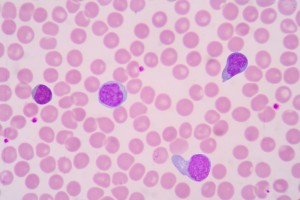

 Fibromyalgia pain is associated with cytokines and oxidized LDL levels. The study looked at 48 patients with fibromyalgia and 43 healthy women . Researchers assessed the participants’ functional status, severity of the symptoms, and the number of tender points using the Fibromyalgia Impact Questionnaire (FIQ). Widespread pain was also assessed with the VAS, the Widespread Pain Index (WPI), and the Symptom Severity Scale (SSS). Blood serum was examined for interleukin (IL)-1-beta, IL-8, tumor necrosis factor-alpha (TNF-a), and oxidized low-density lipoprotein (LDL).
Fibromyalgia pain is associated with cytokines and oxidized LDL levels. The study looked at 48 patients with fibromyalgia and 43 healthy women . Researchers assessed the participants’ functional status, severity of the symptoms, and the number of tender points using the Fibromyalgia Impact Questionnaire (FIQ). Widespread pain was also assessed with the VAS, the Widespread Pain Index (WPI), and the Symptom Severity Scale (SSS). Blood serum was examined for interleukin (IL)-1-beta, IL-8, tumor necrosis factor-alpha (TNF-a), and oxidized low-density lipoprotein (LDL).
There were no differences between either groups in the levels of oxidized LDL, IL-8, TNF-a, and IL-1-beta, but differences emerged between VAS and serum IL-8 and TNF-a in the group of patients with fibromyalgia.
Fibromyalgia patients also presented a relationship between their SSS score and serum oxidized LDL, but no relationship between tender points and the cytokines or oxidized LDL.
A German study looked at cytokines in 40 patients with chronic widespread pain of which 26 had a diagnosis of fibromyalgia. Individuals with chronic widespread pain also had lower levels of cytokines IL-4 and IL-10 compared to individuals without chronic pain. The findings suggest that there may be a link between cytokines and fibromyalgia.
Cytokines are proteins that help the immune system function properly. Cytokines also assist white blood cells to ward off infection. This results in inflammation, which may help explain the pain experienced in fibromyalgia. Additional research is required to determine if cytokines play a role in fibromyalgia or may even be a possible cause of the condition.
Fibromyalgia alters brain signals, raises hyperalgesia, and lowers opioid therapy effectiveness
Fibromyalgia alters brain signals, raises hyperalgesia risk, and lowers opioid therapy effectiveness. Hyperalgesia is an increased pain sensitivity, and the researchers noted that these changes in the brain signals may contribute to pain experienced in fibromyalgia and the lack of response to opioid therapy. Continue reading…
Fibromyalgia pain and osteoarthritis linked in how brain experiences chronic pain
Fibromyalgia pain and osteoarthritis are linked in how the brain experiences chronic pain. Osteoarthritis is a disease in which cartilage is worn down, allowing the bones of the joints to rub together. This can be quite painful and lead to stiffness and chronic pain. A condition with unknown causes, fibromyalgia also results in chronic pain and an increase in pain sensitivity. Continue reading…
Copyright © www.orthopaedics.win Bone Health All Rights Reserved